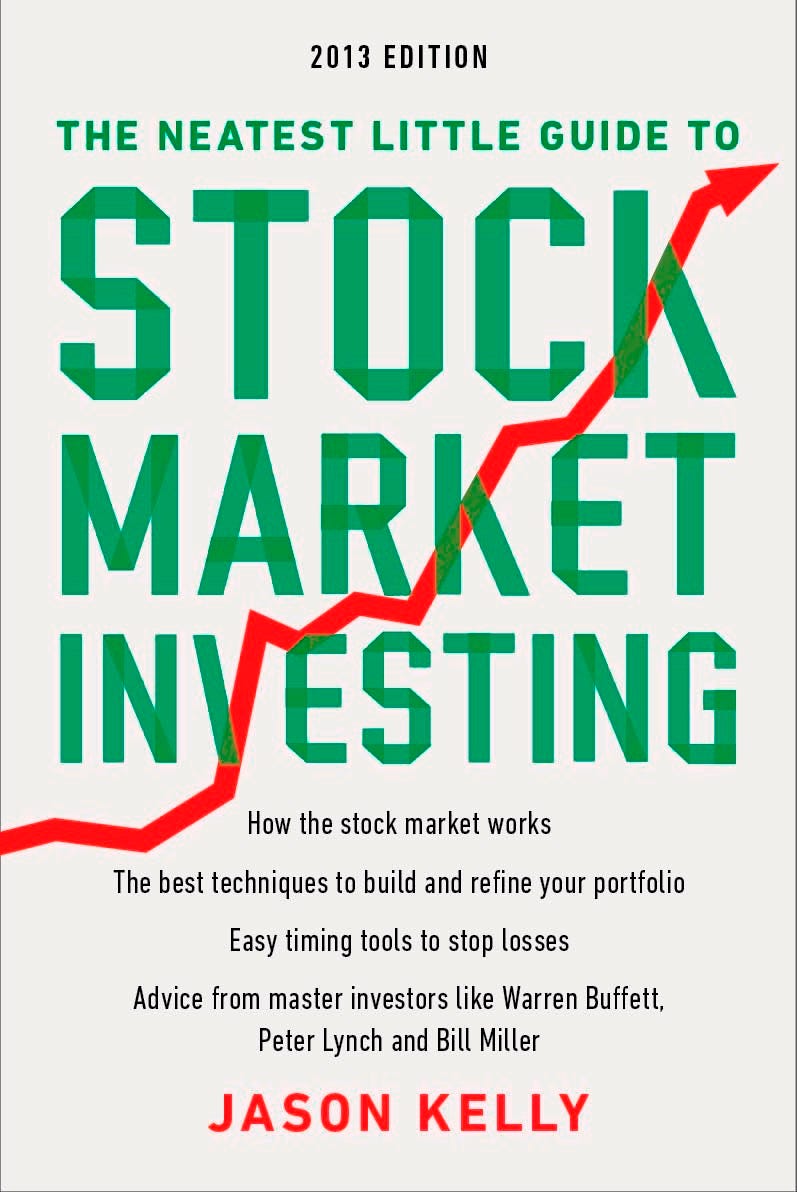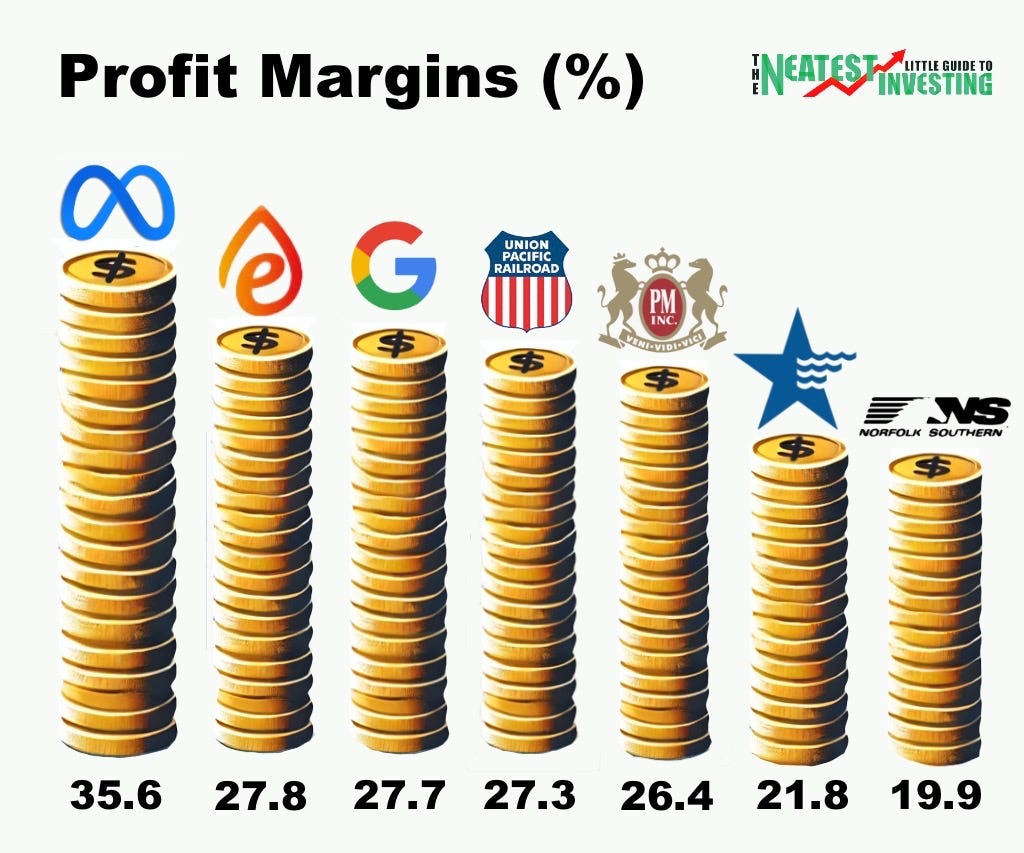From the “Net Profit Margin” section of Chapter 1 in The Neatest Little Guide to Stock Market Investing:
A company’s net profit margin is determined by dividing the money left over after paying all its expenses by the amount of money it had before paying expenses. So, if a company makes $1 million and pays $900,000 in expenses, its net profit margin is 10 percent ($100,000 divided by $1,000,000). If a competing company also makes $1 million but pays only $700,000 in expenses, its net profit margin is 30 percent ($300,000 divided by $1,000,000).
All other things being equal, which company’s stock would you rather own? The company with a 30 percent profit margin, of course. It makes the same amount of money as its competitor but keeps more. Put differently, it spends less to earn the same income. A high profit margin tells you that the company’s management is good at controlling costs. That’s great news because every dollar frittered away unnecessarily is one less dollar of profit for shareholders.From the “Net Profit Margin” section of the worksheet strategy chapter:
As you read in Chapter 2, a high net profit margin is one of Warren Buffett’s requirements for investing in a company. ...
A management team that can maintain a high net profit margin in the midst of increasing competition is every investor’s dream. This one number answers the question that gets to the heart of a company’s capabilities: How much of its earnings does it keep?In this update, we’ll see how net profit margins vary across industries, and whether the metric has been helpful in identifying good stocks.
If you want a high profit margin, avoid the grocery business. While you might wince at the register after tallying up a cart full of groceries, the store keeps less than 2% of that total. For example, Albertsons (ACI $21 +9% YTD) has a profit margin of only 1.3% and Kroger’s (KR $66 +7% YTD) is only 1.9%.
For fat profit margins, you need to sell … what, do you suppose?
Software probably comes to mind, and is a correct pick, but the most profitable industry is tobacco, and both railroad companies and water utilities sport high margins. Megatech isn’t the only business model that makes money.
Let’s go through some of the most profitable industries.
Tobacco
The average net profit margin for a tobacco company is 32%. So long, cereal aisle; hello, Marlboro Man.
He was used in ads for Marlboro cigarettes from 1954 to 1999, portraying smokers of filtered cigarettes as rugged men, overcoming the previous image of filtered cigarettes as being feminine.
Marlboro is a brand owned by Philip Morris (PM $149 +24% YTD), which sports a profit margin of 26.4%. It doesn’t cost much to produce packs of cigarettes and they sell at a premium. The cost of a single cigarette is between a nickel and a dime, but a pack of 20 sells for about $8. Even after decades of antismoking campaigns, Philip Morris sold more than $37 billion worth of cigs last year, mostly the traditional variety but also smoke-free alternatives.
Was the company’s high profit margin a good way to find Philip Morris as an investment? It didn’t hurt, and the stock has provided a decent return. Over the past 12 months, its price rose 67% compared with 23% for the S&P 500. Over the past five years, however, the index won: 81%, compared with 69% for Philip Morris.
So, profit margin indicates a smart business operation, but can’t be used in a vacuum to find winning investments. Nothing works in a vacuum. If anything did, we’d all know to look for it and own the same things and win over time. Life has other plans.
Megatech
Elsewhere, high profit margins would have led you to some of the most successful companies on earth: megatech, specifically the entertainment software category, where you might be surprised to find Google (GOOG $188 -1% YTD), the search giant and owner of YouTube, and Meta (META $729 +24% YTD), owner of Facebook and Instagram.
Google’s profit margin is 27.7%, while Meta’s is 35.6%.
The key to their high margins is the near-zero marginal cost of additional users. Google search, YouTube, Facebook, and Instagram are already built, running on servers and mostly automated, ready to go for anyone to search, watch, post, and react. Combine eyeballs and ads in this environment and watch the dollars flow.
Software and servers do most of the work now that the structure is built. After that, it became a matter of keeping the electricity on and the bank account humming.
Again, a high net profit margin didn’t hurt as part of what helped each of these stocks to a winning performance. GOOG is up 147% over the past 5 years, META 240%, both far ahead of the S&P 500’s 81%.
Rail Transportation
Talk about old school. Yes, even in our age of AI and social media, railroads still play a big part in the economy — and boast an average profit margin of 24.3%.
For example, Norfolk Southern (NSC $257 +10% YTD) has a profit margin of 19.9%, while Union Pacific’s (UNP $251 +10% YTD) is 27.3%.
You know why their margins are so high? Because if you need to move freight across the country, you don’t have a lot of options. Only a handful of companies control this critical infrastructure, giving them immense pricing power. For some routes, the menu consists of one choice — take it or leave it.
Plus, as with the software business, it doesn’t increase cost much to add another “user,” in this case another car full of freight. The engine is going up the tracks anyway, so hook up another car and rake in more sales.
Water Utilities
Here’s one you probably didn’t see coming.
Water is fairly important. You might have noticed it playing a daily role in your life. If it doesn’t, I recommend a lifestyle review.
The average water utility company has a profit margin of 21.3%.
American Water (AWK $127 +2% YTD) serves 3.5 million customers in 14 states, with a profit margin of a 21.8%. Essential (WTRG $36 -1% YTD) offers water services to various municipalities at a profit margin of 27.8%.
Have these been good investments? The high margins might lead you to assume so, but no, they’ve been terrible. Behold:
5-Year Price Change (%)
– – – – – – – – – – – – – – –
+80.9 S&P 500
-8.9 AWK
-33.3 WTRG
There must be something other than profit margin that matters.
How to Use Profit Margin
As you read above, some high-margin businesses have made great investments, while others have not. Welcome to the world of stock investing, where everything works sometimes.
The best way to use profit margin is as part of a company’s story. It never hurts to have a high profit margin, and there are ways for a company to get around a low profit margin. From the worksheet strategy chapter:
Any company making your sheet should have a net profit margin in the top 20 percent of its industry. These are the leaders in their fields and where you want your money.
The reason I go with a relative value instead of an absolute value is that typical net profit margins change from industry to industry.Restricting your portfolio to the top quintile of same-industry profit margins, in conjunction with other metrics, such as growth rates, would provide a good start toward narrowing to leading lights.









Very good post. Can I translate part of this article into Spanish with links to you and a description of your newsletter?